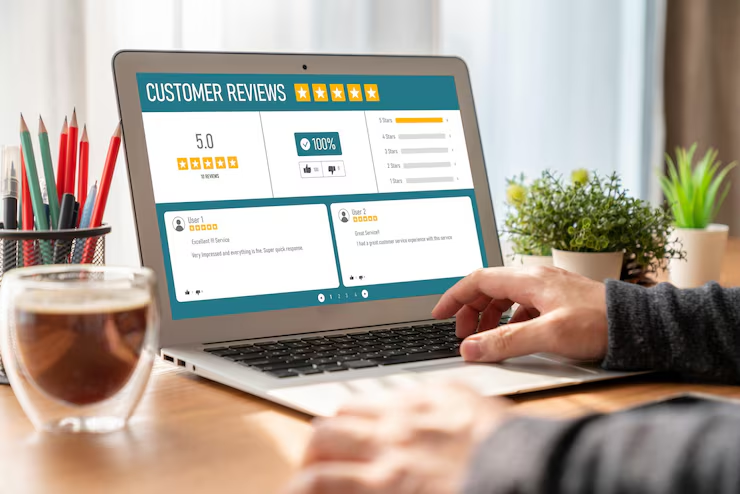- How to Use Web Analytics to Improve Your Marketing - October 21, 2025
- Video Marketing Ideas for Small Businesses - October 21, 2025
- Understanding Customer Journey Mapping in Marketing - October 21, 2025
Marketing in 2025 is not simply about promoting products or services; it’s about understanding how customers interact with your brand across every touchpoint. Today’s customers expect personalized, seamless experiences. They interact with brands via social media, email, search engines, websites, mobile apps, and even offline channels. Successfully guiding a potential customer from first awareness to loyalty requires a strategic approach called customer journey mapping.
Customer journey mapping is more than a visual diagram—it is a strategic framework that reveals how customers perceive, interact with, and experience your brand. It helps marketers identify pain points, optimize touchpoints, and create meaningful, personalized experiences. At Design Flash, we’ve seen brands completely transform their marketing strategies when they begin truly understanding the customer journey.
In this comprehensive guide, we’ll explore everything about customer journey mapping: what it is, why it matters, detailed steps to create one, the right tools, ways to measure its effectiveness, real-world examples, challenges, and future trends shaping marketing in 2025 and beyond.

What is Customer Journey Mapping?
Customer journey mapping is the process of visualizing the customer’s experience with your brand across multiple interactions and touchpoints. It tells a story of how someone discovers your business, engages with it, makes a purchase, and ideally becomes a loyal advocate.
Imagine it as a roadmap of experiences. Each customer travels a unique path, facing different emotions, challenges, and touchpoints along the way. A well-crafted journey map captures these experiences and provides insights that help marketers make informed, actionable decisions.
A strong customer journey map answers key questions like:
- How do customers discover our brand?
- What obstacles do they face before purchasing?
- What motivates them to choose our product over competitors?
- How can we build loyalty and advocacy?
Understanding these aspects allows marketers to design campaigns, content, and interactions that truly resonate with their audience. It also ensures that every touchpoint contributes to a seamless, satisfying experience.
Key Components of a Customer Journey Map
For a journey map to be effective, it should include several core components:
- Customer Personas: Detailed profiles of your target audience, including demographics, behaviors, needs, and pain points.
- Journey Stages: From awareness to advocacy, defining each step the customer takes.
- Touchpoints: Points where the customer interacts with your brand, both online and offline.
- Customer Emotions: How customers feel at each stage—whether confused, excited, frustrated, or satisfied.
- Pain Points: Challenges that slow or prevent customers from progressing.
- Opportunities: Areas where marketing efforts can enhance the experience, build trust, or encourage conversion.
Each of these elements ensures that the map is not only visual but also actionable, providing insights that can directly improve marketing outcomes.

Why Customer Journey Mapping Matters
Understanding the customer journey is not just a trend—it is essential for modern marketing success.
Enhancing Customer Experience
By mapping the journey, marketers can identify friction points and remove obstacles. Whether it’s simplifying a checkout process, improving website navigation, or providing better customer support, journey mapping allows brands to deliver a seamless experience that keeps customers engaged.
Driving Personalization and Relevance
Modern consumers expect personalized experiences. Journey mapping helps brands understand where and how to personalize interactions—from targeted emails to retargeted ads, social media messaging, and website content. Personalization increases engagement, conversion rates, and brand loyalty.
Improving Marketing ROI
Marketing budgets are finite, and every dollar spent needs to count. When campaigns are aligned with the customer journey, marketers can focus on touchpoints that truly influence conversions, reducing waste and maximizing ROI.
Cross-Functional Alignment
Customer journey maps create a shared understanding across teams—marketing, sales, product, and support. Everyone can see where customers struggle and succeed, fostering collaboration to enhance the overall experience.
Stages of the Customer Journey
While every business may define their journey differently, most customer journeys include the following stages:
Awareness
The awareness stage is where potential customers first learn about your brand. They may discover you through organic search, social media, online ads, influencer content, word-of-mouth, or offline channels. The goal is to capture attention and create curiosity.
At this stage, content that educates, informs, or entertains is most effective. Blog posts, social media posts, videos, podcasts, and SEO-optimized content all play a role. For example, a startup selling eco-friendly products might publish a blog about the environmental impact of single-use plastics to attract interested audiences.
Consideration
Once aware, potential customers evaluate your offerings against competitors. They compare products, read reviews, explore case studies, and research features. At this stage, marketers should focus on building trust and authority.
Tactics that work well include:
- Educational blog posts or guides
- Webinars and live demos
- Email nurture campaigns
- Testimonials and case studies
By addressing customer questions and concerns, brands can influence decisions and move prospects closer to purchase. For instance, a SaaS company might provide a free trial and a detailed comparison chart to help prospects make informed choices.
Purchase
The purchase stage is where conversion happens. Your marketing efforts need to ensure that customers can easily complete their desired action.
Optimizing the purchase experience includes:
- Streamlined checkout processes
- Multiple payment options
- Clear pricing and offers
- Responsive customer support
Even small obstacles in this stage can lead to abandoned carts, making it critical to test and refine the user experience. A retail brand, for instance, might reduce checkout steps and offer guest checkout to increase conversion rates.
Retention
Customer engagement doesn’t end at purchase. Retention focuses on keeping customers satisfied and loyal. Retaining a customer is often more cost-effective than acquiring a new one.
Effective retention strategies include:
- Personalized follow-up emails
- Loyalty and rewards programs
- Educational content to help customers maximize product value
- Exclusive offers or early access to new products
At this stage, marketers should measure satisfaction and encourage repeat purchases. A subscription-based service, for example, might use email campaigns with tips to maximize product use, increasing renewal rates.
Advocacy
Satisfied customers often become your most valuable marketing asset. Advocacy is when customers promote your brand through referrals, reviews, or social media shares.
Encouraging advocacy can include:
- Referral programs
- Review campaigns
- Featuring customers in case studies or testimonials
- Engaging customers in social media communities
Advocates not only boost revenue but also enhance brand credibility and awareness. A clothing brand could encourage social sharing by offering discounts for customer posts featuring their products.
How to Create a Customer Journey Map
Creating a journey map involves several strategic steps:
1. Define Goals and Objectives
Start by asking why you are mapping the journey. Is your goal to improve conversions, reduce churn, enhance engagement, or optimize campaigns? Clear objectives ensure that your map is actionable and measurable.
2. Build Customer Personas
Developing detailed personas helps visualize different customer paths. Personas should include demographics, behavioral traits, motivations, pain points, and preferred communication channels. At Design Flash, we recommend creating 3-5 personas for most small to medium businesses.
3. List Customer Touchpoints
Identify all interactions customers have with your brand, both online and offline. Examples include:
- Website visits and blog reading
- Social media interactions
- Email campaigns
- In-store visits or calls
- Customer service interactions
Mapping touchpoints reveals where customers engage most and where friction occurs.
4. Map Actions and Emotions
Document what customers do and feel at each touchpoint. Are they confused, excited, frustrated, or satisfied? Emotional insights are critical because customers’ decisions are influenced as much by feelings as by logic.
5. Identify Pain Points and Opportunities
Look for areas where customers face obstacles or disengage. This could include slow website load times, confusing product descriptions, or poor customer service. At the same time, highlight opportunities to enhance the experience, such as personalized recommendations or simplified checkout flows.
6. Visualize the Journey
Use diagrams, flowcharts, or journey mapping software to create a visual representation of your map. It should be easy to understand, actionable, and shareable with your team.
7. Gather Feedback and Iterate
Customer behavior changes over time. Gather feedback from real customers, monitor analytics, and update your journey map regularly. At Design Flash, we recommend reviewing journey maps quarterly to account for evolving trends and customer needs.
Tools for Customer Journey Mapping
Several tools make journey mapping easier and more effective:
- Smaply: Helps visualize customer personas and journey maps.
- UXPressia: Offers templates and collaborative features.
- Miro: Interactive whiteboard for journey mapping with teams.
- Lucidchart / Microsoft Visio: Professional diagramming for detailed mapping.
- Google Sheets / Docs: Simple and low-cost approach for teams starting out.
By combining these tools with analytics platforms like Google Analytics, Hotjar, and CRM data, your journey maps become actionable and data-driven.
Measuring the Impact of Customer Journey Mapping
Mapping is only valuable if it leads to actionable improvements. Metrics to track include:
- Conversion rates across touchpoints
- Customer satisfaction scores (CSAT)
- Net Promoter Score (NPS) for advocacy
- Retention and churn rates
- Average time to purchase
Tracking these metrics ensures your map results in tangible improvements and measurable ROI.
Real-World Examples
Consider a SaaS company struggling with trial-to-paid conversions. Mapping the customer journey revealed that users were confused during the onboarding process. By adding step-by-step tutorials and personalized follow-up emails, the company increased conversions by 35% within three months.
Retail brands can use journey mapping to optimize in-store and online experiences. For example, understanding that customers research online but purchase offline enables targeted retargeting campaigns, improving conversion efficiency.
Another example is an e-commerce clothing brand that noticed users abandoned carts at the shipping stage. By simplifying shipping options and adding estimated delivery times, the brand improved its checkout conversion rate by 20%.
Challenges and Considerations
While journey mapping offers immense value, it’s not without challenges:
- Complexity: Large organizations have multiple personas and touchpoints.
- Data Accuracy: Incomplete tracking leads to inaccurate conclusions.
- Dynamic Behavior: Customer behaviors change frequently; maps require updates.
- Team Alignment: Cross-functional collaboration can be difficult without proper communication.
Despite these challenges, the insights gained from journey mapping far outweigh the effort required. Regularly updated maps ensure that businesses stay responsive to evolving customer behaviors and market trends.
Future Trends in Customer Journey Mapping
In 2025 and beyond, customer journey mapping is evolving with new technologies and consumer expectations.
- AI-Driven Insights: Artificial intelligence can analyze massive datasets to uncover hidden patterns in customer behavior. Predictive modeling can anticipate next actions, allowing marketers to intervene proactively.
- Omnichannel Integration: With customers interacting across multiple platforms, journey maps must include offline, online, mobile, and social experiences to create a unified strategy.
- Real-Time Personalization: Brands can now deliver highly personalized experiences based on real-time data from interactions, browsing history, and behavioral signals.
- Voice and Visual Search Influence: Customers increasingly use voice commands and visual search, requiring journey maps to adapt to these emerging touchpoints.
Conclusion
Customer journey mapping is no longer just a marketing tool—it is a strategic necessity for businesses in 2025. By understanding how customers interact with your brand at every stage, you can create personalized experiences, eliminate friction, and drive meaningful engagement.
At Design Flash, we’ve seen brands that invest in journey mapping achieve remarkable results: higher conversions, increased customer loyalty, and stronger advocacy. Mapping the journey allows marketers to step into the customer’s shoes, anticipate their needs, and deliver value at the right moment.
The key to successful customer journey mapping lies in combining data-driven insights with empathy. It’s about understanding emotions, motivations, and behavior—not just clicks and purchases. By continuously refining journey maps based on feedback and analytics, businesses can create experiences that delight customers, foster loyalty, and drive long-term growth.
In a world where consumers expect seamless, personalized experiences, the brands that truly understand their customer journeys will lead the way. Start mapping your customer journey today, and transform the way you connect, engage, and grow your audience.

